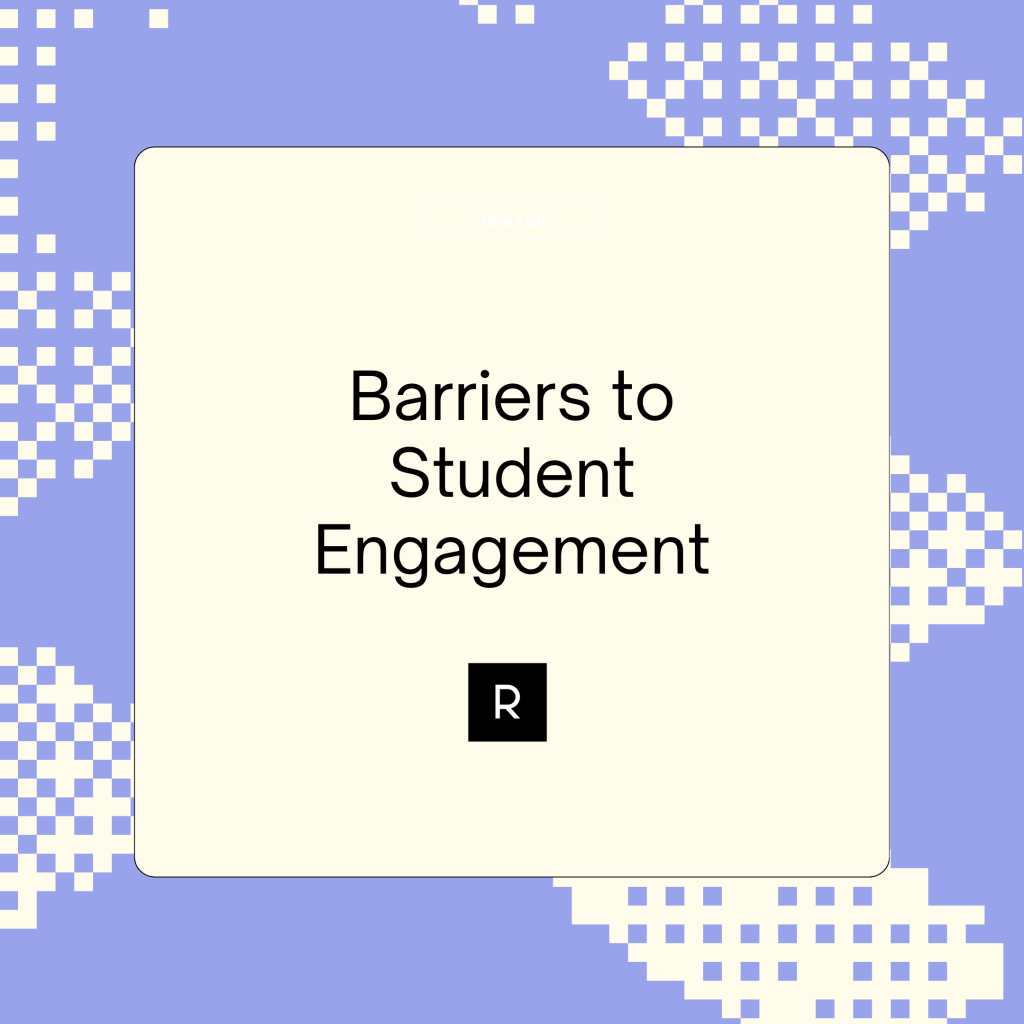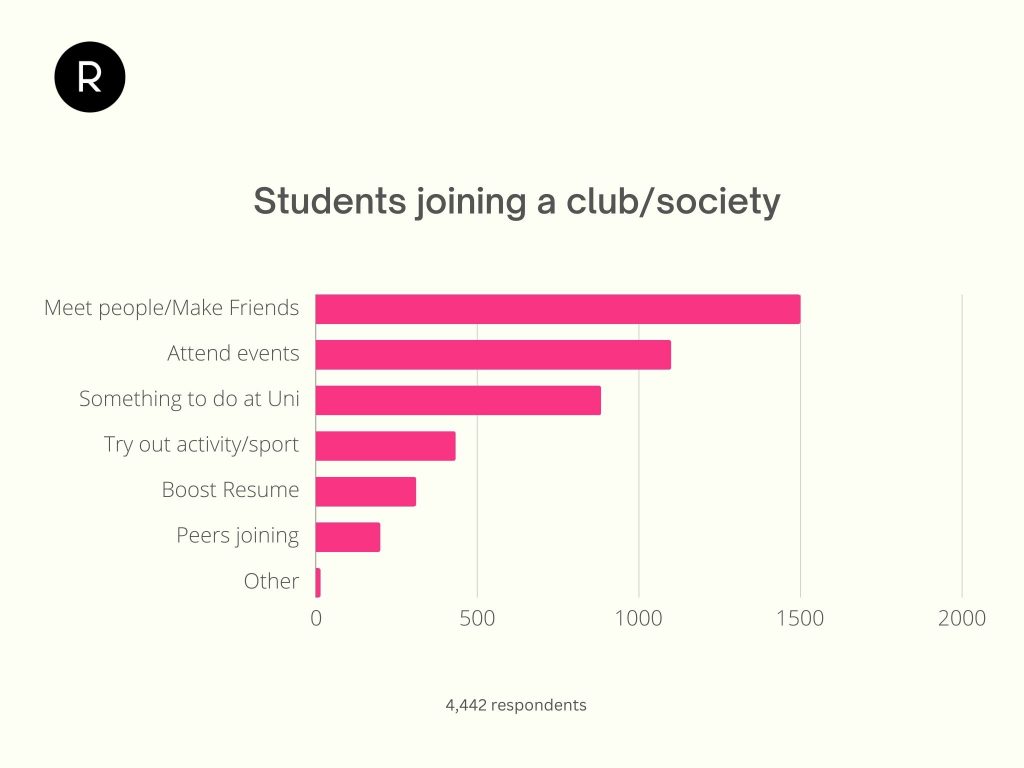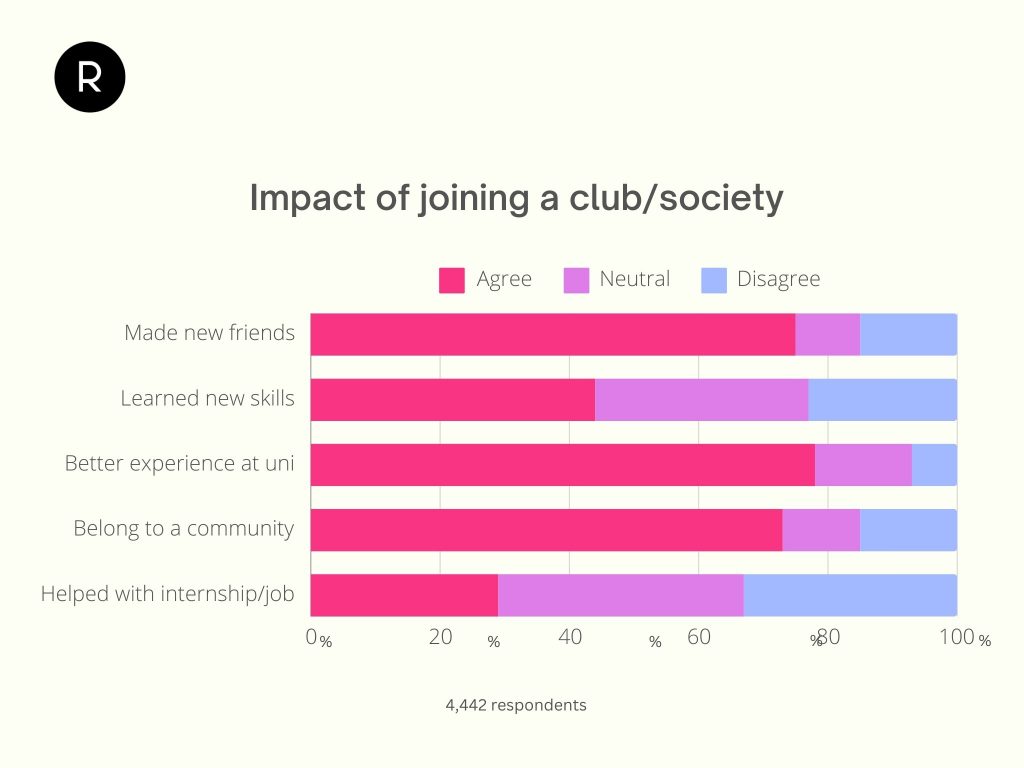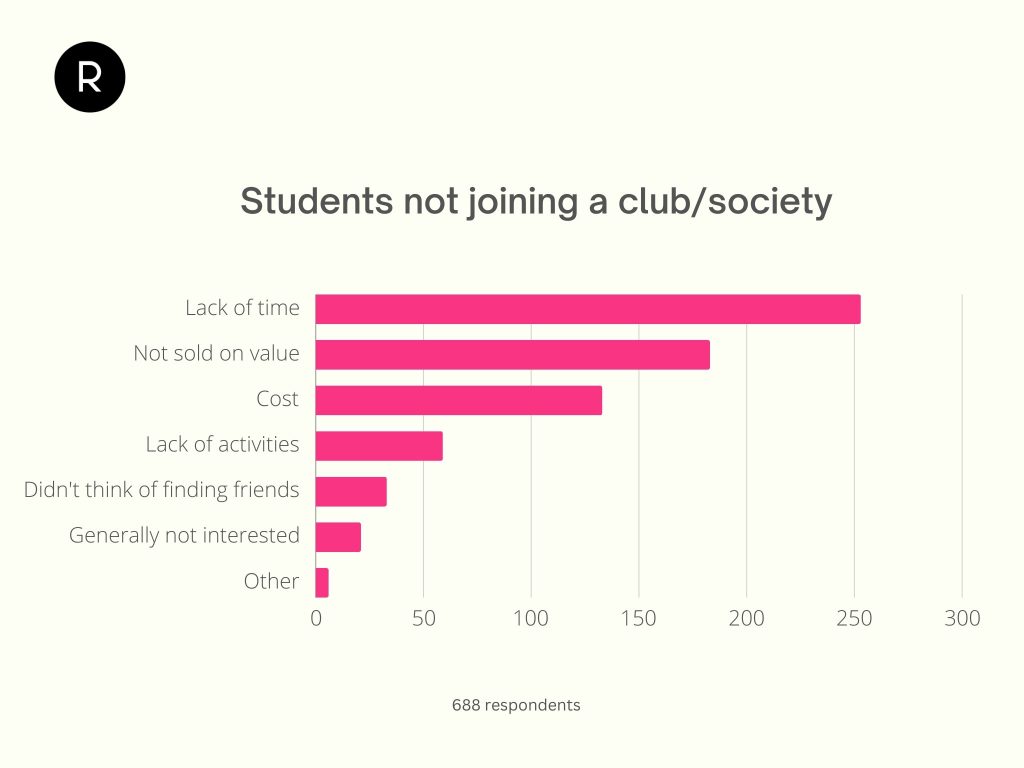Barriers to Student Engagement

The Role of Student Unions & Affairs
Student unions (SU) at universities, made up of a mix of full time, part time and student staff, exist to support students with academic and numerous welfare issues. Whilst unions differ in size, organisation and structure they share similar characteristics: they organise, aggregate and intermediate student interests, provide services, and organise or support student-led social activities. One main area of support is the formation, affiliation and funding of student led clubs and societies. Depending on the university population, there can be up to 250+ of these organisations at any one campus, all trying to represent a particular demo-graph of students, sport, religion etc. This makes clubs and societies the perfect place to meet other students, build a sense of community and foster engagement within the community, which ultimately affects student satisfaction. This is one of the many reasons SU’s place a high importance on these student led organisations and thus makes sure they have the adequate tools and funding to be able to operate.
However, there are certain barriers students face when engaging, or trying to engage, with a student-led sports club or society – barriers such as difficulty in costs, time, geography, and communication.
Student Feedback and Sentiment
A survey, inspired by a similar one conducted across UK universities, was rolled out across 8 Australian campuses where various students and club representatives responded during two key time periods (2022 Orientation Week & 3 months post). It was thought that releasing the survey during these time periods into the new academic year was long enough for students (particularly those who were new, or had just joined a club or society) to have an informed opinion. The questions were based around experiences and perception on joining a club/society.
The majority of students participated in club activities to meet like minded people and make friends, to foster a sense of belonging within the university – which is predominately a club’s main objective, supporting the fact that the perception of clubs/societies towards students is being projected accurately.

When asking students about their experience, the majority of respondents scored towards the positive side with friendship and socialisation being a core effect, and personal development/growth as another close effect. As part of the learning new skills category, students mentioned that their club/society enabled them to take on significant roles (president, treasurer, secretary etc) that taught them relevant skills which they could apply to their internships.

Barriers
The biggest obstacle to students not wanting to join a club/society was a lack of time due to their study and casual job commitments. Geography was also a main factor listed where students were unable to travel to some events or meetings due to their living arrangements and a lack of transport options. In addition to that, 33% of students that chose this category noted that meeting times the clubs organised were at hours that clashed with other priorities, making it hard to join the club. Another major obstacle were students not recognising or understanding the specific value the club was promoting, to make it worthwhile for them to join and commit to – particularly religious based groups. Sports club did not have that problem as students understood what activities to expect by partaking in those club activities.
COVID and the general downturn in the economy has also had an impact on student spending on campus, with many students being quite conservative on what they want to spend on. While not captured in the survey, the majority of students wished that the student association/union would subsidise membership fees and tickets to social events that are over $100.
